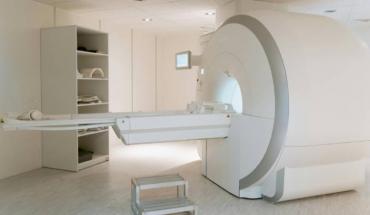Surgery for Congenital Hand Deformities
What are congenital hand deformities?
Congenital anomalies are deformities that are present at birth. Any type of deformity in a newborn infant can become a challenge for the child as he/she grows. Hand deformities can be particularly disabling as the child learns to interact with the environment through the use of his/her hands. The degree of deformity varies from a minor deformity, such as a digital disproportion, to a severe deformity, such as total absence of a bone.
Early consultation with a hand surgeon is an important part of the treatment process for the child born with a hand deformity. Even if reconstructive surgery is not a possibility, there are many different types of prosthetic devices that can be used to increase function.
What are the different classifications of congenital hand deformities?
The classifications for hand deformities can vary. The classifications listed below have been accepted by the American Society for Surgery of the Hand (ASSH). Classifications may change as more knowledge is obtained regarding each of the conditions. There are seven groups of deformities of the hand that will be discussed, including the following:
-
Problems in development of the parts This occurs when parts of the body stop developing while the baby is in the womb, causing either a complete absence of a part of the body, such as the hand, or a missing structure, such as part of the arm bone. In the case of the complete missing part, surgery is not indicated. These children may be introduced to prosthetic devices early in their childhood. Types of this classification include, but are not limited to:
-
Radial clubhand A radial clubhand is a deformity that involves all of the tissues on the radial side (thumb side) of the forearm and hand. There may be shortening of the bone, a small thumb, or absence of the thumb. Deformities of the wrist are usually operated on around 6 months of age.
-
Ulnar clubhand An ulnar clubhand is less common than a radial clubhand. This deformity may involve underdevelopment of the ulnar bone (the bone in the forearm on the side of the little finger), or complete absence of the bone.
-
-
Failure of parts of the hand to separate With this type of deformity, the parts of the hand, either the bones and/or the tissues, fail to separate in the womb. The most common type of this classification is syndactyly. Syndactyly is the most common congenital hand deformity, in which two or more fingers are fused together. There is a familial tendency to develop this deformity. If the fingers are completely fused together, it is considered complete. There are two types of syndactyly, including the following:
-
Simple syndactyly - involves fusion between only the tissues of the fingers.
-
Complex syndactyly - involves fusion between the bones.
Another example of failure of the hand to separate is seen in contractures of the hand. Contractures of the hand may also develop as a result of failure of the cells to differentiate in utero. A contracture is an abnormal pulling forward of the digits of the hand, usually caused by problems with the muscles or skin. One of the common types of this classification includes congenital triggering. Congenital triggering occurs when one of the digits is unable to extend. It is usually seen in the thumb. It may take some time in the child's development before it is noted that the child can not extend the thumb. Some of these cases improve on their own. Surgery is usually not performed until the second year of life, but preferably before the age of 3.
-
-
Duplications of digits Duplication of digits is also known as polydactyly. The little finger is the finger that is most often affected.
-
Undergrowth of digits Underdeveloped fingers or thumbs are associated with many congenital hand deformities. Surgical treatment is not always required to correct these deformities. Underdeveloped fingers may include the following:
-
The digit is small
-
Muscles are missing
-
Bones are underdeveloped or missing
-
There is complete absence of a digit
-
-
Overgrowth of digits Overgrowth of digits is also known as macrodactyly, which causes an abnormally large digit. In this situation, the hand and the forearm may also be involved. In this rare condition, all parts of the finger (or thumb) are affected; however, in most cases, only one digit is involved (usually the index finger). Surgical treatment of this condition is complex and the outcomes may be less than desirable. Sometimes, amputation of the enlarged digit is recommended.
-
Congenital constriction band syndrome This occurs when a tissue band forms around a digit (finger) or limb (arm), causing problems that can affect blood flow and normal growth. Ring constrictions are congenital (present at birth). This condition may be associated with other problems such as clubfoot, cleft lip, cleft palate, or other craniofacial anomalies. The cause of the ring constrictions is unknown. Some theories suggest that amniotic banding may lead to ring constrictions around a finger or limb.
With this condition, there are four degrees of severity, including the following:
-
Simple constrictions
-
Constrictions that cause deformities beyond the constriction
-
Constrictions that are associated with the fusion of parts of the finger
-
Constrictions so severe that part of the finger will need to be amputated from the process
-
-
Other generalized problems with the skeletal system These are a rare and complex group of problems.
Treatment for congenital hand deformities
Specific treatment for congenital hand deformities will be determined by your child's physician based on:
-
Your child's age, overall health, and medical history
-
Extent of the condition
-
Cause of the condition
-
Your child's tolerance for specific medications, procedures, or therapies
-
Expectations for the course of the condition
-
Your opinion or preference
Treatment may include:
-
Limb manipulation and stretching
-
Splinting of the affected limbs
-
Tendon transfers
-
External appliances (to help realign misshapen digits or hands)
-
Physical therapy (to help increase the strength and function of the hand)
-
Correction of contractures
-
Skin grafts - involves replacing or attaching skin to a part of the hand that is missing skin or has been removed during a procedure.
-
Prosthetics - may be used when surgery is not an option, or in addition to surgical correction.
Related Questions
Gynecomestia surgery
- 3232 Days ago
- Cosmetic Surgery - Surgery
Lypoma removal surgeon
- 3265 Days ago
- Cosmetic Surgery - Surgery
Removing fingure
- 3493 Days ago
- Surgery
Scary Face
- 3508 Days ago
- Cosmetic Surgery - Surgery
I have Abdominal hernia
- 3604 Days ago
- Surgery
Lypoma removal surgeon
- 3265 Days ago
- Cosmetic Surgery - Surgery
cosmetic surgery for a burnt mark on leg
- 3596 Days ago
- Surgery





















